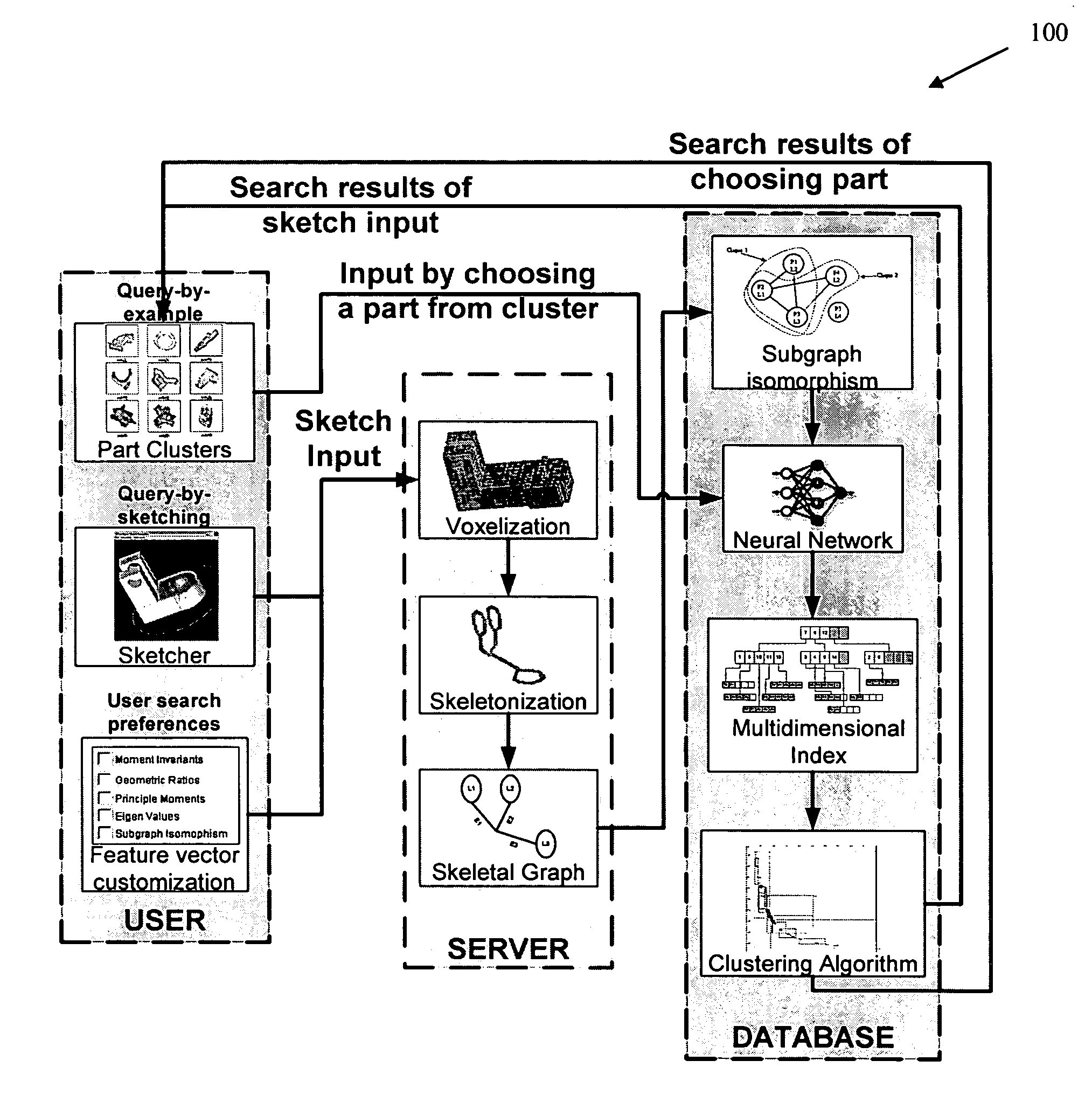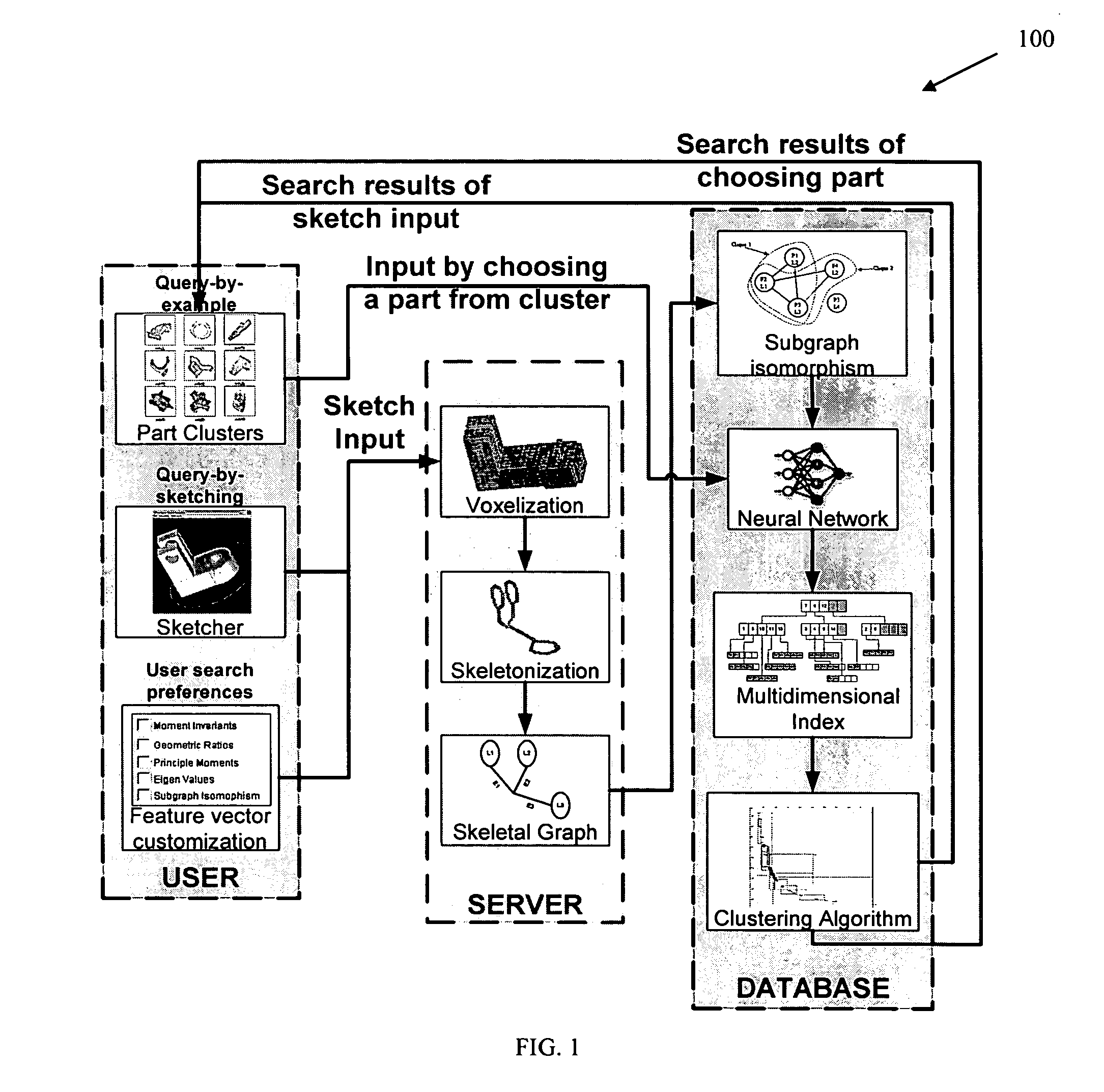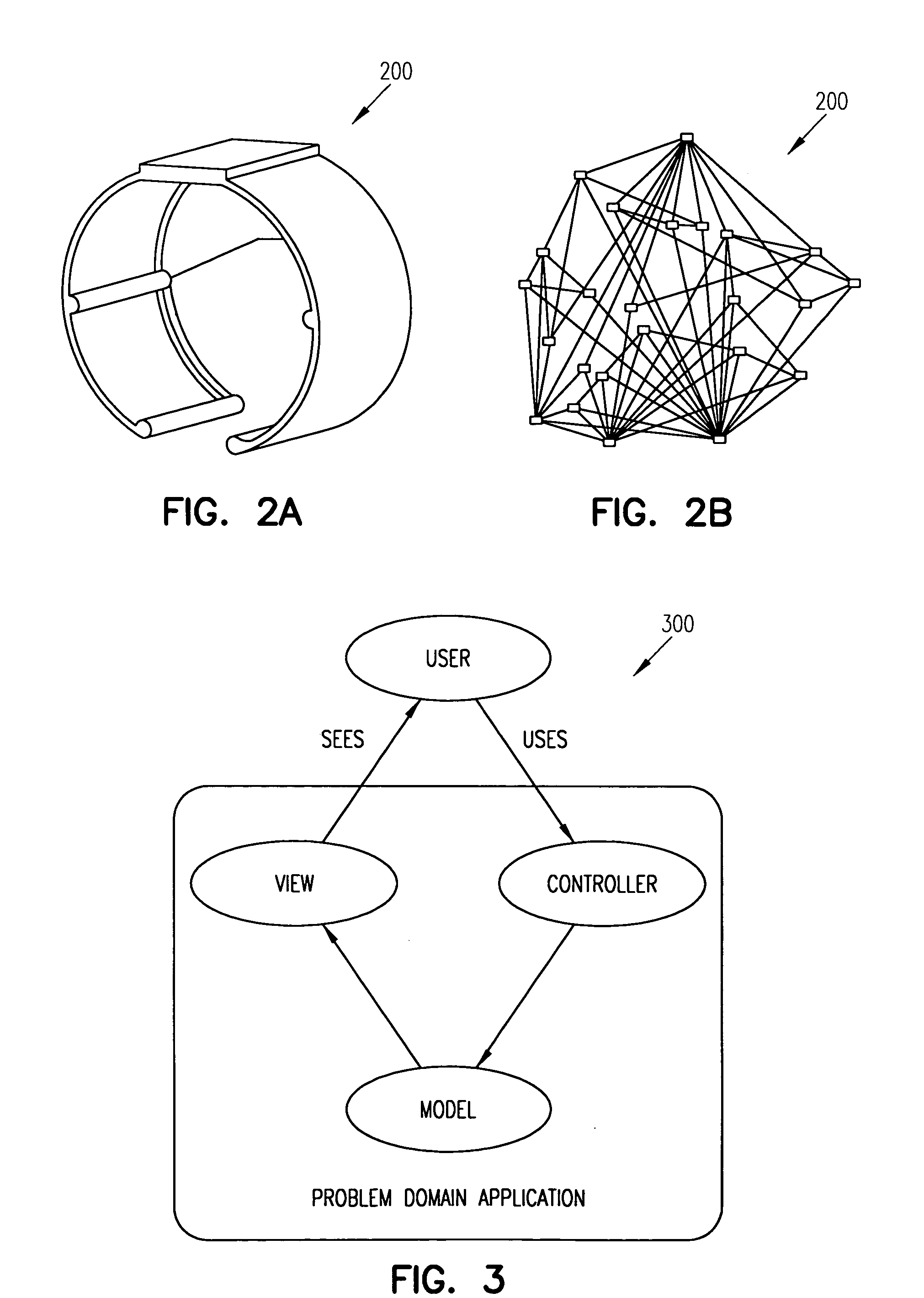Methods, systems, and data structures for performing searches on three dimensional objects
a three-dimensional object and search technology, applied in the field of search for three-dimensional (3d) models, can solve the problems of not only taking time, but also relying on human accuracy, and the lack of available 3d shape search engines
- Summary
- Abstract
- Description
- Claims
- Application Information
AI Technical Summary
Benefits of technology
Problems solved by technology
Method used
Image
Examples
Embodiment Construction
of Method:
[0361] In the following sections, the processing for the above referenced methodologies is described:
[0362] 1. Preprocessing:
[0363] In order to solve the problem of 2D shape searching, one first needs to transfer the document to electronic formats. The most widely used method is scanning, which produces "raster images". The scanned drawing is broken down into a matrix of pixels. But the semantic information contained in the document is not transferred to electronic file, i.e. the meaning of the symbol is not interpreted. Hence, some preprocessing steps known, as "Vectorization" is needed, by means of which the information necessary to define geometrical entities (such as straight lines, arcs, etc.) and symbols (such as letters) is obtained from a raster image. Hence the information stored on an electronic file can be interpreted and used for searching based on feature and reused based on solid model / skeleton reconstruction.
[0364] Scanning Type
[0365] Most engineering drawin...
PUM
 Login to View More
Login to View More Abstract
Description
Claims
Application Information
 Login to View More
Login to View More - R&D
- Intellectual Property
- Life Sciences
- Materials
- Tech Scout
- Unparalleled Data Quality
- Higher Quality Content
- 60% Fewer Hallucinations
Browse by: Latest US Patents, China's latest patents, Technical Efficacy Thesaurus, Application Domain, Technology Topic, Popular Technical Reports.
© 2025 PatSnap. All rights reserved.Legal|Privacy policy|Modern Slavery Act Transparency Statement|Sitemap|About US| Contact US: help@patsnap.com



